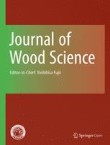Citation Impact 2023
Journal Impact Factor: 2.2
5-year Journal Impact Factor: 2.5
Source Normalized Impact per Paper (SNIP): 1.098
SCImago Journal Rank (SJR): 0.515
Speed 2023
Submission to first editorial decision (median days): 18
Submission to acceptance (median days): 119
Usage 2023
Downloads: 662,652
Altmetric mentions: 62
